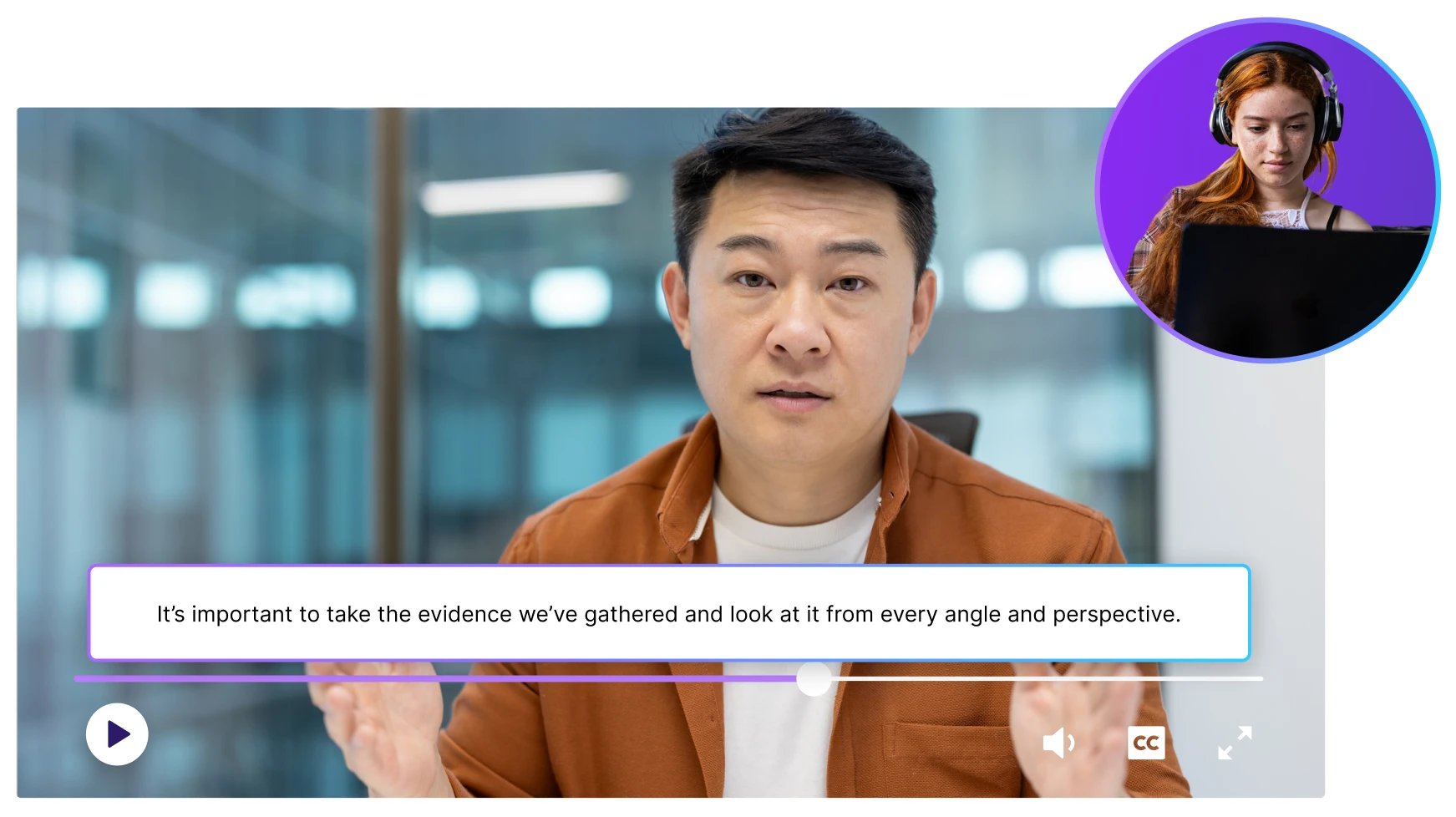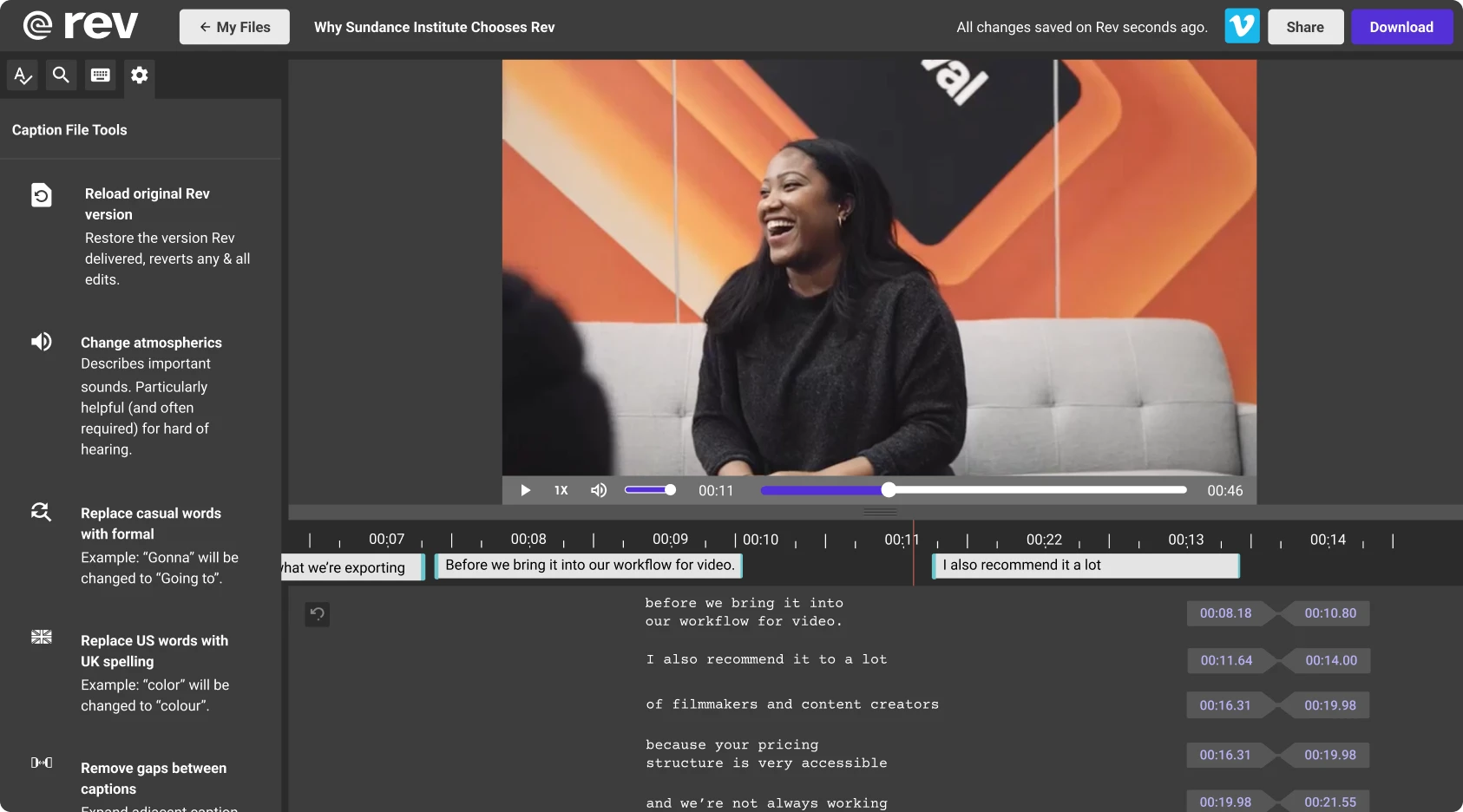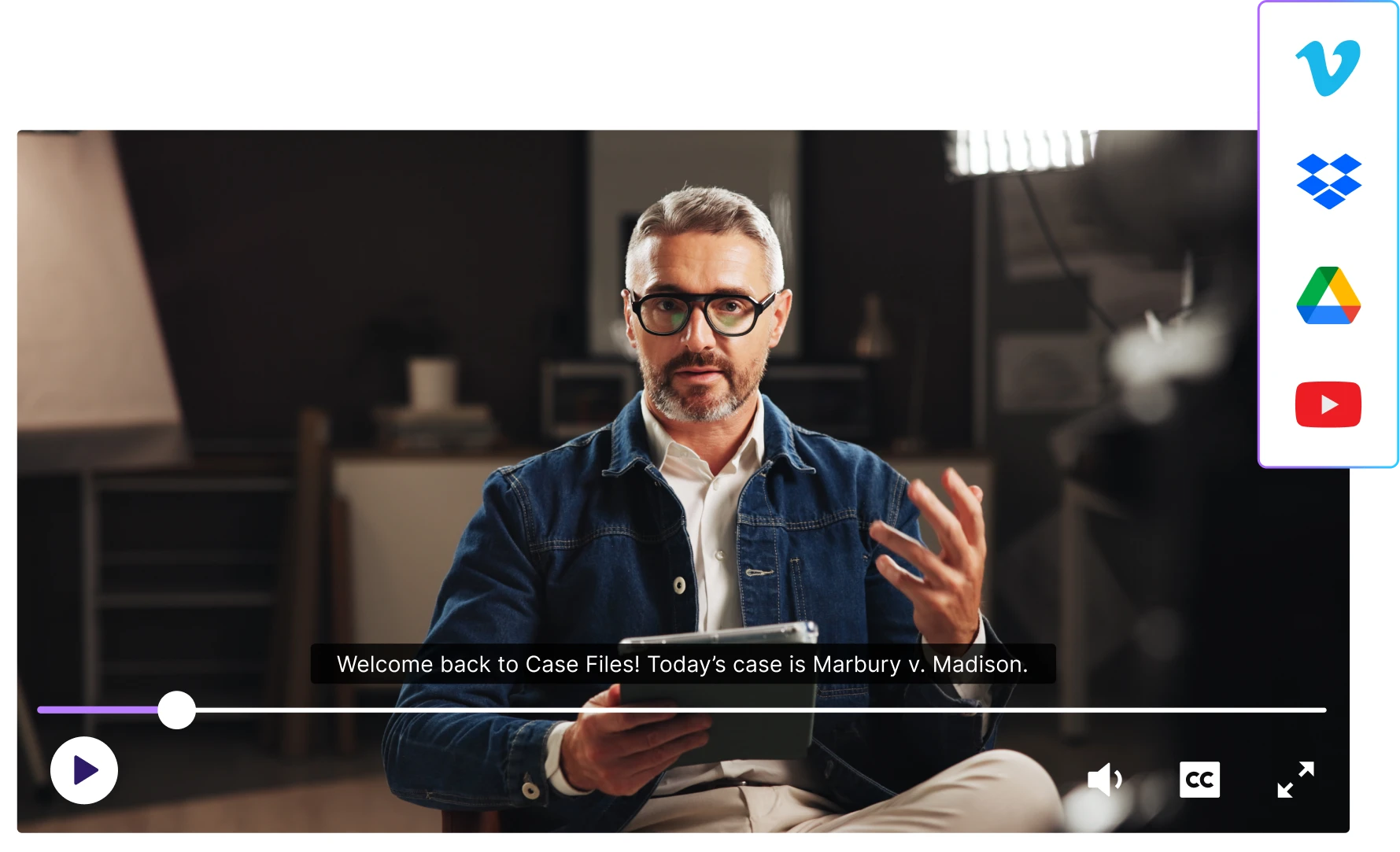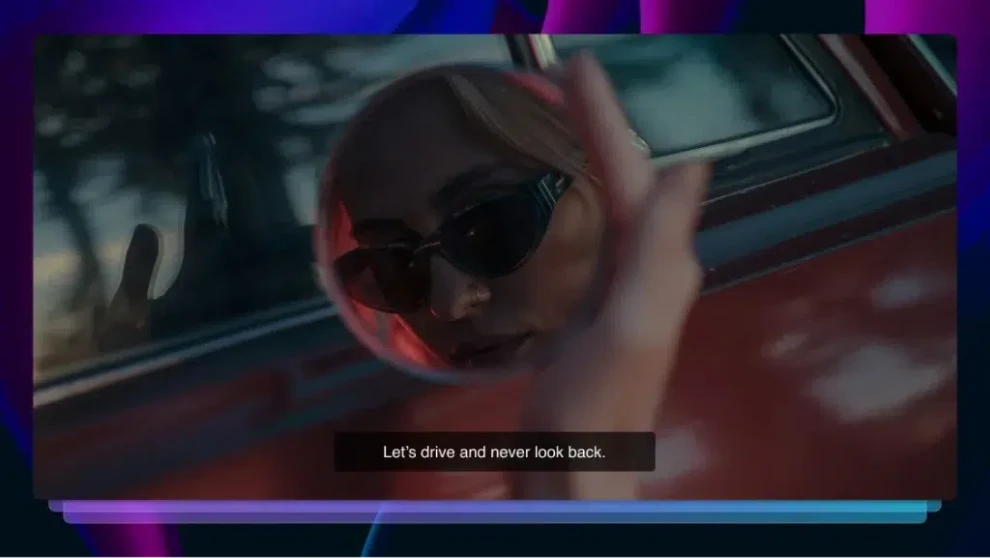Closed Captioning Service: 99% Accurate
Capture every word, sound effect, and musical cue with precision with Rev's human closed captioning services.

FCC & ADA-Compliant Captions
Rev video captions are FCC compliant and ADA-compliant, making them the best choice for FAST channels and captions for compliance.


English & Spanish Captions
Reach more viewers with 99%+ accurate English or Spanish captions. Our captions combine industry-leading AI with expert human review, backed by 12+ years and 759 billion of words transcribed in the past year alone.

12hr Turnaround
Need captions fast? Our 14K-strong human captionist bench delivers same-day results — in 12 hours or less — without sacrificing accuracy.
Intuitive Captions Editor
Get accurate captions. Adjust words, timing, speaker names, or add burned-in captions to match your video's style.

Key Integrations
Rev’s video captioning services automatically integrate with YouTube, Vimeo, Dropbox, and Google Drive.

Get Captions By the Minute, or Subscribe and Save
for max Accuracy
Human Captions
Recommended
Reach a wider audience and improve SEO discoverability with human-generated captions in English or Spanish.
starting at
$1.99 /minute
What's included:
99% accuracy in 12 hours or less
Free audio recording on Rev’s mobile app
FCC, and ADA compliant in all major file formats
Interactive editor for easy collaboration
Automatically integrates with YouTube, Vimeo, Dropbox, and Google Drive
Price
$0.25 /minute
What's included:
95+% accuracy in five minutes or less
Available in 37 languages
Download caption files in all major formats
Interactive editor for easy collaboration
Automatically integrates with YouTube, Vimeo, Dropbox, and Google Drive
for max Reach
Global Subtitles
Create globally accessible videos with fluent, human-transcribed subtitles in 17 languages.
Price
$6.49 to $15.99 /minute
What's included:
Translated subtitles by fluent speakers in 17 languages
99% accuracy in 48 hours or less
Download files in all major formats with free English captions
Interactive editor for easy collaboration
Automatic integration with YouTube, Vimeo, and Dropbox
Find the Right Plan for You
Free
Limited access. Need more features? Try Basic or Pro today.
Features:
45 minutes of AI transcription per month6x more! Get 300 minutes now – offer ends soon!
Basic
Built for productivity in individuals and small teams.
$14.99 per seat/month
Get Started
Features
20 hours of AI transcription per month; 90 minutes per recording
3% discount on 99% accurate human transcripts, caption, and subtitlesUpgrade to human transcripts or captions for $1.93/min (reg price $1.99) or global subtitles for $6.30 to $15.51 (reg price $6.49 to $15.99)
AI Notetaker for Google, Teams, and Zoom
Rev Mobile App for recording and editing on the go
Interactive transcript editor
Unlimited use of AI Assistant & AI Prompts
Most popular
Enterprise
Built for organizations needing security, management, and customized features.
Features
100 hours of AI transcription per month; no limit on file length
AI captions in 37+ languages included in 100 monthly hours
Custom discounts on 99% accurate human transcripts, captions, and subtitles
AI Notetaker for Google, Teams, and Zoom
Rev Mobile App for recording and editing on the go
Interactive transcript editor
Unlimited use of AI Assistant & AI Prompts
Interactive captions editor
Unlimited customizable AI templates tailored just for you
Enterprise-grade privacy; HIPAA and SOC 2 Type II compliance
SSO & Domain Claiming
Free
Limited access. Need more features? Try Basic or Pro today.
Features:
45 minutes of AI transcription per month6x more! Get 300 minutes now – offer ends soon!
Basic
Built for productivity in individuals and small teams.
$9.99 per seat/month
$179.88 $119.88 billed annually Save 33%
Get Started
Features:
20 hours of AI transcription per month; 90 minutes per recording
15% discount on 99% accurate human transcripts Upgrade to human transcripts or captions for $1.70/min (regular price $1.99) or global subtitles for $5.52 to $13.59 (reg price $6.49 to $15.99)
AI Notetaker for Google, Teams, and Zoom
Rev Mobile App for recording and editing on the go
Interactive transcript editor
Unlimited use of AI Assistant & AI Prompts
Most popular
Enterprise
Built for organizations needing security, management, and customized features.
Features
100 hours of AI transcription per month; no limit on file length
AI captions in 37+ languages included in 100 monthly hours
Custom discounts on 99% accurate human transcripts, captions, and subtitles
AI Notetaker for Google, Teams, and Zoom
Rev Mobile App for recording and editing on the go
Interactive transcript editor
Unlimited use of AI Assistant & AI Prompts
Interactive captions editor
Unlimited customizable AI prompts tailored just for you
Enterprise-grade privacy; HIPAA and SOC 2 Type II compliance
SSO & Domain Claiming












